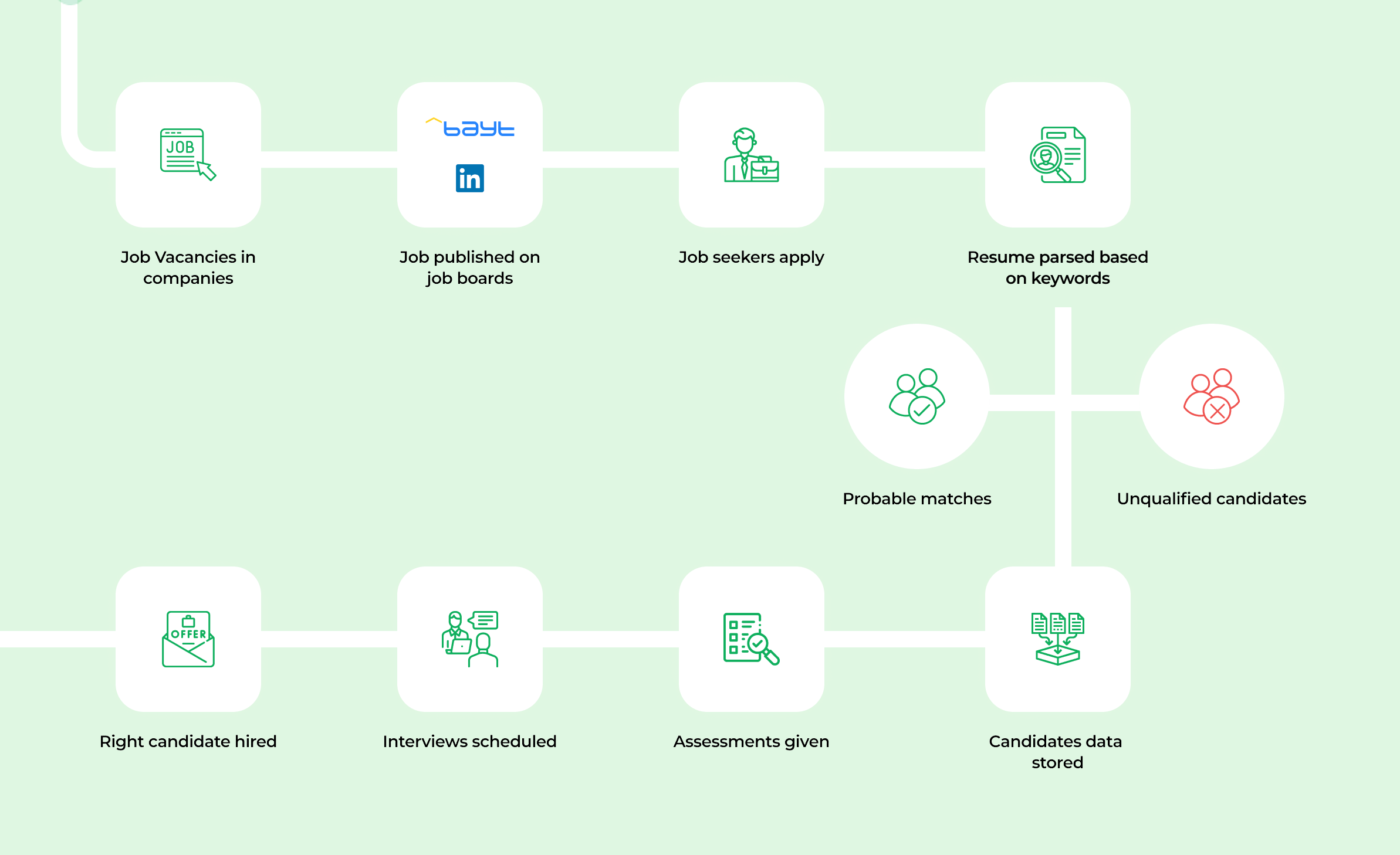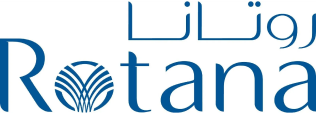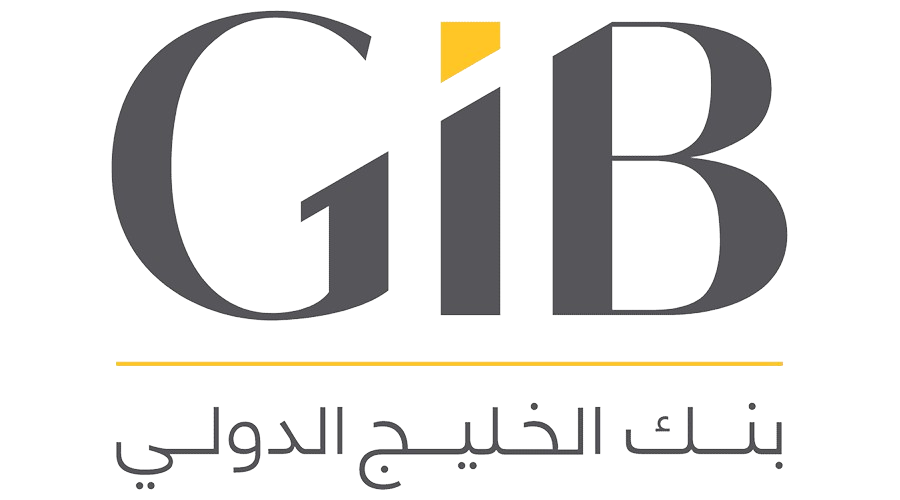The Middle East labor and employment landscape is undergoing dynamic changes, with the UAE, the KSA, and Qatar leading the transformation. The UAE demonstrates its commitment to sustainable development with the Dubai 2040 Urban Master Plan and Abu Dhabi Vision 2030, while the KSA has rolled out initiatives like Saudi Vision 2030 and the National Transformation Program (NTP). Improvements to the kafala sponsorship system are also being implemented, especially in the KSA. These policy shifts are reflected in employment trends in the region, with opportunities becoming available in the fields of artificial intelligence, IT, cybersecurity, renewable energy, healthcare, and hospitality.
Research estimates that the MENA region has the potential to generate 10 million new jobs by 2050 due to implementation of robust industrial and climate development policies. In response, companies are looking to optimize their recruitment processes to reduce time-to-hire and cost-per-hire, focus on strategic workforce planning using data and analytics, implementing automation and leveraging AI to streamline repetitive tasks, and develop strong employer brands. An applicant tracking system (ATS) is well-placed to enable organizations to meet these objectives.
What is an applicant tracking system?
An applicant tracking system (ATS) is a software application for recruiters and human resource managers (HR) to track candidates throughout the recruiting and hiring process. It enables recruiters and hiring managers to send automated emails to candidates, conduct background checks, streamline interview scheduling, collect feedback from stakeholders, send notifications and alerts, and generate offer letters with e-signatures. It also acts as a central database to manage job postings and job applications, which includes tasks like creating job descriptions and posting to various job boards.
With features like AI candidate matching, recruiters use specific criteria like location, education, years of experience, industry, and other keywords to screen the résumés of applicants and assign ranks based on fitment. After a candidate accepts an offer, hiring managers can onboard them via the ATS to ensure all activities, including paperwork, approvals, equipment provisioning, team introductions, and L&D programs are completed. Applicant tracking systems can even help employers attract top talent by building a strong employer brand via a searchable careers page. An ATS manages the applicant experience as well, from searching for jobs, applying online, checking application status, and receiving notifications and alerts.
The purpose of an ATS is to bring in organization and efficiency in the hiring process, especially when interviewing a large number of candidates.
With hundreds of applicants for every job posting, especially in the UAE and KSA, recruiters can use an applicant tracking system to cull unqualified applications quickly.
You can also conduct AI-driven asynchronous video interviews via the ATS as an effective screening mechanism.

For example, Ferdinand Bilstein Middle East, a subsidiary of the Bilstein Group, used Talentera’s Video Assessment, the AI video assessment tool, to hire for a key sales position crucial for business development at their Dubai Office.
From the hundreds of applications received, the hiring manager was able to shortlist 36 candidates and find the ideal person within two weeks, which translated to 80% less time to hire.
How do applicant tracking systems work?

Here’s a high-level overview of how applicant tracking systems work:
- Hiring managers submit a job requisition to the ATS, which includes information such as the job title, required experience, and necessary skills.
- The ATS creates an “ideal candidate profile” using this information. It also drafts a job description and posts it to various job boards—internal and external.
- As applicants submit their resumes, the ATS parses, sorts, and ranks them based on how closely they match the ideal candidate profile.
- Recruiters communicate with qualified applicants and schedule hiring team interviews.
- After each interview, hiring team members submit feedback, which is used by decision-makers to move candidates to the next round of assessment in the hiring process.
- After the interviews are done, the chosen candidate is extended an offer letter.
- The HR team completes onboarding activities via the ATS to make sure the candidate has all the necessary information and approvals, especially remote candidates and expats.
Applicant tracking systems are not just for screening applicants with the right hard skills like proficiency in navigational skills and aircraft maintenance (aviation), CAD and structural analysis (engineering), or lesson planning and bilingual instruction (education). Recruiters can also hire candidates with excellent soft skills with an ATS, such as communication, problem-solving, empathy, and team collaboration.
Who uses applicant tracking systems?
In the MENA region, the following industries primarily use applicant tracking systems to deal with large volumes of applicants and stay compliant with local regulations:

Banking and finance
Highly regulated industries like banking and finance use ATS not only to manage high-volume and multi-location hiring, but also stay compliant to legal and regulatory requirements, especially labor laws and data privacy laws (PDPL). They also use ATS to derive insights on key hiring metrics and strengthen brand identity to attract high-quality applicants in competitive financial locations like Dubai and Doha. In fact, 70% of the banks in the KSA use Talentera!

Healthcare
With stringent healthcare standards, healthcare organizations use ATS to streamline talent sourcing, attract qualified medical professionals, and ensure compliance with regional licensing requirements (DHA, HAAD). They also assist in processing work permits and visas for expatriate staff, and ensure compliance with local data security and privacy laws to protect sensitive information.

Educational institutions
Universities, colleges, and schools use ATS to manage the hiring of academic and administrative staff, especially during seasonal hiring phases.

Construction and engineering firms
Large-scale infrastructure and development projects are being undertaken in the region due to economic diversification policies, “smart city” establishment, urban population growth, and investments in renewable energy projects. As a result, engineering firms are hiring technically skilled people as well as project managers to execute these projects.

Aviation industry
Airlines, airports, and related service companies use ATS to recruit pilots, cabin crew, ground staff, and administrative staff. Besides handling high-volume hiring, ATS enables hiring managers to stay compliant with local and international aviation standards.

Government and public sector
Public sector organizations and government entities hire people via an applicant tracking system to ensure compliance with local hiring regulations.
In terms of company size, it is a myth that only enterprises benefit from ATS due to their large-scale hiring requirements. Startups and tech companies also use such software to scale their teams quickly and cost-effectively. In areas like Dubai, Riyadh, Cairo, and Beirut that houses a growing startup ecosystem, hiring managers use ATS to attract top talent via employer branding and career pages to compete with larger firms.
For example, YallaMotor, an automotive SME, used Talentera to build a customized career portal to strengthen their employer brand and attract highly qualified applicants via regional job boards like bayt.com.
- 1.7 million new users per month
- 551new hires
- 20%company growth
ATS vs CRM: What’s the difference?
An ATS and CRM are both used to manage candidates. However, the purpose of each platform is different. Here are the key differences between the two:
| ATS (applicant tracking system) | CRM (candidate relationship management) | |
|---|---|---|
| Purpose | To automate and optimize the hiring process | To build and nurture long-term relationships with job seekers and passive candidates to create a talent pipeline |
| Tasks involved |
|
|
| Capability overlap |
|
|
Should you integrate your CRM with an ATS?
Integrating your CRM with an ATS helps you build a tech stack that streamlines and optimizes the entire talent acquisition process.

For example, Talentera’s Talent CRM module helped Rotana become an employer of choice in the hospitality industry in the UAE.
Starting the collaboration with Talentera in 2010, Rotana now has a 1.3 million-plus talent pool spread across 14 countries aided by Talentera’s branded career pages, and receives 80+ qualified applications per job opening. The hotel management chain also hires 1000+ people each year through the fine-tuned recruitment engine driven by Talentera’s platform.
When should you implement an applicant tracking system?
- You track hiring efforts via spreadsheets, emails, text messages, and phone calls.
- Your time-to-hire is lengthy (around 10-12 weeks). [Note that the average time to fill vacancies in the UAE is 30-60 days]
- You spend hours reviewing unqualified applications.
- You manually post job postings to various job boards.
- You cannot attract top-quality applicants because you have a weak employer brand.
- You manually keep track of visa quotas for hiring expats.
- You have difficulty managing applicant data due to lack of visibility.
- You do not have a broad talent pool from which to source qualified candidates.
- You find it challenging to comprehensively onboard remote employees and expats.
Benefits of an applicant tracking system for employers
Companies that implement applicant tracking systems to automate their recruitment workflows receive the following benefits:
Screen high-volume applications efficiently
Employers have to deal with a huge volume of unqualified applicants for each job posting.
With an ATS like Talentera, they can screen applications quickly and efficiently with these features:
- Screening filters based on location, education, years of experience, industry, and keywords to choose qualified applicants
- Customized screening questionnaires to further screen qualified applications
- AI candidate matching and ranking based on qualifications and suitability for the role
- AI-driven asynchronous video interviews for candidates to record answers to role-specific screening questions and share it with the hiring manager and other stakeholders.
Build a strong employer brand to attract top talent
A weak employer brand causes companies to lose out on top talent. If a company is not perceived to be industry-leading, stable, reputable, and growing, potential applicants will not find it attractive enough to apply even if the role is financially lucrative.
An ATS helps employers in the following manner:
- Enables them to develop a robust careers page that showcases the company’s culture, mission, and vision
- Makes advanced search functionalities available to candidates to search for relevant job openings
Comprehensively onboard expats and remote employees
In the UAE and the KSA, 88% and 73% of the workforce consists of expats. Onboarding them poses several challenges, such as:
- Workplace integration – hierarchy, role of meetings, decision-making process, and pace of work can be different
- Cultural adaptation
- Legal and regulatory compliance
- Accommodation and relocation
- Healthcare and insurance
Also, the average cost of onboarding manually is $37,500 – $40,000 per year (assuming that the company has three recruiters with a pay of $25 per hour and hires 50 employees per year). An ATS with an onboarding module will help employers reduce costs of managing onboarding tasks by 3X-4X annually, ensure distributed teams reach peak productivity 34% faster, and make it more likely for employees to stay with the company longer. In addition, the visa management module helps employers keep track of expat visa counts and manage the allocation of visas as they hire.
Eliminate manual work
The recruitment process involves a lot of manual work, including screening resumes and shortlisting candidates, sending follow-up communications, creating job offers and updating candidates about their application status, and managing other repetitive tasks such as organizing interview schedules and sending rejection emails.
With an ATS, these manual tasks can be streamlined in the following way:
- Automation of the various recruitment workflows
- AI-driven candidate matching to find the most suitable profile for the role
- Templatized workflows for offer letters, rejection emails, requisitions, and approvals to save time and reduce errors.
Based on past experiences and previous sessions with Talentera, it stands out as the preferred solution for our talent acquisition department. It has the following advantages: Easy access, Quick implementation, Streamlined workflows, and Improved candidate experience.
From my point of view, Here are just a few of the benefits you can expect with Talentera: reduced time to hire, improved quality of hire, and enhanced employer branding.
Elaf Al Ammar
Recruitment Specialist, Samaco Motors
Centralize data management
The hiring process involves a lot of data that is challenging to manage manually i.e. resumes, cover letters, interview feedback, candidate profiles, job descriptions, approvals, and other paperwork. An ATS acts as a central database to store and manage the date flowing in from different sources. Recruiters and hiring managers can search the database and retrieve all the information pertaining to a candidate or job.
Align and coordinate with stakeholders
Apart from organizing data in a centralized location, an ATS also acts as a platform to bring all the stakeholders on the same page. With integrated workflow notifications, stakeholders at every step of the recruitment workflow—from requisitioning to hiring—are automatically notified about any inputs they need to give. This takes away the pain of manually organizing stakeholder contributions and approvals.
Get performance metrics
“You can’t improve what you can’t measure.”
Management expert Peter Drucker’s quote can be aptly applied to the recruiting and hiring process, too. With paperwork and/or spreadsheets, the lack of visibility makes it challenging to understand the bottlenecks in the process or track important performance metrics like time-to-hire, cost per hire, application completion rate, offer acceptance rate, quality of hire, and source of hire. Without such data, the recruitment workflow remains chaotic. An ATS like Talentera solves the problem with its robust reporting capabilities and ability to track performance metrics. It consolidates data from all channels, such as internal referrals, job boards, and recruitment agencies.
Keep sensitive candidate and hiring data secure
Candidate and hiring data is subject to data privacy laws in the MENA region, such as the Personal Data Protection Law (PDPL) in the UAE and KSA. Modern applicant tracking systems adhere to these data privacy laws as well as GDPR in addition to industry security standards like SOC2. It also ensures that data is stored within company borders in compliance with the latest security practices.
Key features to look for in an applicant tracking system
There are hundreds of applicant tracking systems to choose from, including global ATS providers, regional and local solutions, and industry-specific solutions. As per Aptitude Research’s High-Volume Hiring Guide, 65% of companies with high-volume recruitment requirements are not satisfied with their current ATS. Most traditional ATS systems are designed for traditional corporate hiring and lack capabilities to support high-volume recruitment such as dynamic career sites, programmatic advertising, scheduling, or conversational AI.
Why do companies in MENA love Talentera?
Ideally, the features to look for in a MENA-specific applicant tracking system include:
- MENA-focused design i.e. aligns with the operational and cultural specifics of Middle Eastern companies
- Offers end-to-end support for implementation, customer support, and training
- Customer-centricity i.e. built to solve the actual pain points of talent acquisition through feedback from a wide variety of customers
- Robust data security and privacy for sensitive hiring and candidate data
- Integration with popular MENA job boards such as Bayt.com, Naukri Gulf, and GulfTalent
- Ability to post jobs to multiple regional job boards simultaneously
- Bilingual product (Arabic and English) and regional customer support within customer time zones
- Customizable recruitment workflows and reporting to align closely with the organization’s requirements
- Localized resume parsing, which includes:
- Parsing Arabic resumes accurately,
- Recognizing local education systems and qualifications (Islamic studies, Technical and Vocational Education and Training)
- Understanding MENA-specific job titles and roles (Saudization Specialist, Emiratization Specialist, Government Liaison Officer, Educational Policy Analyst, Desalination Engineer, GCC Aviation Compliance Officer)
- AI-driven automation for various stages of the hiring process
- AI candidate matching to find best-fit candidates for different roles
- Templatized workflows for repetitive tasks like requisitions, approvals, rejection emails, and approvals
- Features to assist with localization initiatives like Saudization and Emiratization
- Sponsorship and visa management modules for remote employees and expatriates
- Islamic calendar integration i.e. ability to schedule interviews using both the Gregorian and Hijri calendars
- Mobile app for recruiters to manage recruitment activities on the go given the high smartphone penetration in the MENA region
- Integration with popular social media networks in the region, such as LinkedIn and Googlein the MENA region
- Integration with local background check providers and reference checking services
- Data localization options to comply with country-specific data sovereignty laws
- Multi-country support via a single platform
I am pleased to provide feedback on our experience with Talentera’s services. The system has proven to be exceptionally user-friendly and effective. It has significantly reduced our paperwork and accelerated our processes, which has been a tremendous help to our operations. Additionally, the support provided by the team has been outstanding. They are consistently prompt and on point, which greatly enhances our user experience.
We would rate our likelihood to recommend Talentera as a solid 10. I look forward to continuing our fruitful partnership and am excited to see how the system will evolve to further benefit our workflow.
Essa Taqi
Head of HR Digital Transformation and Analytics, GIB [Gulf International Bank]
How to choose the best applicant tracking system for your business
Do not forget to ask your ATS vendor these important questions to determine if the applicant tracking system suits your needs. A GetApp report revealed that 78% of end users found that an ATS improves the quality of their hires, whereas 86% of end users reported that it significantly decreased their time-to-hire.,
Customization Capabilities
Does it allow configurations or customizations to suit your specific recruitment needs?
MENA-Specific Capabilities
Does it have AI-driven candidate shortlisting capabilities?
Does it allow you to search for candidates from your talent CRM or candidate pool with multiple filters?
Does it allow you to access external databases popular in the MENA region such as Bayt.com?
Does it help with resume parsing, including Arabic language resumes?
Does it enable interview scheduling based on Gregorian and Islamic calendars?
Recruitment Workflow Support
Can it support asynchronous video interviews and skill assessment tests?
Does it automate recruitment workflows?
Does it support sending bulk emails and email scheduling?
Can customized employer pages be built?
Does it offer performance reports and analytics?
Does it cater to remote employees and expatriates?
End-to-End Recruitment Support
Does it offer robust after-sales service?
Does it have in-built evaluation screening and onboarding functionalities?
Are integrations to HRMS or HRIS allowed via readymade APIs?
Besides these must-haves, companies can choose to include add-on modules as per their specific requirements.
How much do applicant tracking systems cost?
It is challenging to provide a blanket response to the question of how much do applicant tracking systems cost because of the wide variety of platforms, additional modules and services, and different pricing models. Therefore, the total cost will depend on the company size and its specific needs.
To give you an idea, here is a company size-wise breakdown:

Paying per user or seat helps such companies since they tend to have limited hiring needs and budgets. They can expect to pay USD$3000 – USD$5,000 per year.

Either a pay-per-user or flat rate pricing will work well for such companies. They can expect to pay USD$6,000 to USD$15,000 per year.

Pricing for such companies will depend on the feature set required, add-on modules, and integrations. They can expect to pay USD$15,000 – USD$50,000+ per year.

Such companies prefer a multi-year contract with a flat rate, and can expect to pay USD$125,000 per year.
Best practices of implementing an applicant tracking system
For a painless ATS implementation experience, careful planning, execution, and effort is required. Following these best practices will ensure that the implementation runs smoothly:
Define your recruitment process
In consultation with all the stakeholders, you must define the various stages in your recruitment process. e.g. attracting talent, screening resumes, scheduling interviews, conducting interviews, evaluating assignments, and extending offer letters. Map your business processes and workflows to the ATS i.e. create a visual diagram of steps involved, who owns which task, and where the ATS would integrate with these steps. Then, you determine the key metrics you will track in the ATS, such as time to hire, cost per hire, application completion rate, offer acceptance rate, quality of hires, and so on. Performing this exercise ensures that you choose the right ATS to align with your hiring needs.
Set up an ATS implementation team
A company-wide change like implementing a new ATS must be planned and executed in an organized fashion. Your transition plan, or change strategy, should explain how the stakeholders across the HR ecosystem will be informed about the change, how the switch to the new ATS (or the first ATS) will be made, and how the stakeholders will carry out tasks during the transition. The ATS implementation team, who will be responsible for executing the change strategy, consists of the following members:
- Project sponsorA senior executive who will lead the team and offer support
- Project managerWill oversee the implementation process, coordinate activities, and make sure deadlines are met
- HR stakeholdersHR team members who will offer inputs on workflows, user experience, and requirements
- IT leadA technical expert who will oversee the technical aspects of the implementation, including data migration, system configuration, and integrations
- Training coordinatorWill develop training materials and conduct training sessions to offer support to end users
- Vendor representativesWill address customization requirements and technical issues for smooth implementation; belongs to the ATS vendor’s team
- User representativesWill offer diverse perspectives based on the needs of their group – recruiters, hiring managers, candidates
- QA testers
- Privacy/compliance officers
Prepare for data migration
Data migration involves the following steps:
- Identify existing data in all locations i.e. spreadsheets, HRIS, existing ATS, job boards
- Clean, standardize, and validate data
- Determine the origin and destination fields
- Select a migration method.
You can either import the data in bulk in CSV or Excel formats or via API integration. Next, you back up your data and chalk out a rollback plan in case the data migration fails.
Configure and customize your ATS
Once data migration is done, you work with all the stakeholders to gather requirements and inputs on how to customize the ATS to meet their needs. You’ll be performing the following tasks:
- Configuring basic settings, such as user roles and permissions, default language, geolocation settings, brand information
- Creating standardized job requisition templates
- Creating customized application forms for candidates
- Setting up workflow rules and automation, such as automated email notifications and status updates
- Configuring integrations with other systems, such as HRIS, assessment platforms, background check providers, and job boards.
Test the ATS with a beta launch
A beta launch enables you to test any issues with the ATS in real-world settings without impacting the entire organization. You invite a diverse group of end users to use the features, workflows, and integrations of the ATS and provide feedback on their experiences. With this information, you can make adjustments or improvements before rolling out the tool to the entire organization.
To understand how to get the most out of your ATS, please read 10 ATS Best Practices: Maximizing the Potential of Your Applicant Tracking System.
The future of applicant tracking systems
As the MENA region is emerging as an economic powerhouse, companies are adopting new tools and technologies to keep pace with the growth. Some trends we’re observing include:
AI-powered automation
Companies are leveraging AI to supercharge the recruitment process from end to end. From intelligent applicant screening and ranking to enabling real-time, access-based collaboration, and generating data-driven insights and recommendations, the applications of AI algorithms to power ATS functionalities are boundless.
Read more about it in the article:
Unleashing the Future of Hiring: AI and ATS Unite to Supercharge Talent Acquisition
Predictive analytics for talent forecasting
Companies are using predictive analytics to identify high-potential candidates, predict employee performance, forecast future hiring needs, and improve diversity and inclusion initiatives. This has a positive impact on employee retention, cost-per-hire, and productivity, and employer brand.
We have a guide that delves deeper into AI-powered predictive analytics.
About Talentera
Talentera is an innovative, AI-powered recruitment software, meticulously designed for companies in the Middle East. It's not just a tool; it's a recruitment partner that aligns with your company's unique hiring processes and challenges. Unlike rigid systems, Talentera ATS adapts to your existing recruitment workflows, ensuring seamless integration into your organization, and making it intuitive and easy to use.. Talentera evolved organically based on direct feedback from customers across 14+ industries across 7 countries. The platform is built to solve actual pain points of talent acquisition. We are preferred by industry giants, and trusted by 30% of the top 50 banks and 15% of the leading 100 companies in the MENA region.
Working with Talentera has transformed our recruitment process. It has streamlined our efforts and has supported us to find the best talent for our roles. The platform is now a key component of our employment process because of its extensive capabilities and user-friendly layout.
One aspect that stands out is the platform’s ability to customize recruitment workflows to match our unique needs. From posting job vacancies to managing candidate applications, the platform offers seamless integration and efficiency every step of the way. Above all, the Talentera team has provided us with amazing assistance and collaboration. Their commitment to comprehending our needs and offering customized solutions has been crucial to our success in hiring.
Ciprian Drumen
Director ‑ Manpower Planning & Recruitment ‑ Human Resources, Expo City Dubai
FAQs
How effective is ATS?
ATS platforms are effective in reducing time-to-hire, lowering recruitment costs, and improving the quality of hires.
What types of companies use ATS?
ATS platforms are useful for all company sizes—startups, SMBs, and enterprises. Some industries that regularly use ATS platforms to manage high-volume hiring and reduce costs are banking and finance, healthcare organizations, governmental organizations, hospitality, educational institutions, manufacturing firms, retail, and staffing agencies.
What are the misconceptions about ATS?
Common misconceptions about ATS platforms are:
- They are only useful for large, multinational companies
- They are time-consuming to implement
- They are designed to replace human recruiters
- They do not process PDF applications or those with double-column layouts
- They can be “gamed” to get applications accepted by stuffing keywords
Can an ATS help with scheduling interviews?
Yes, an ATS helps recruiters and hiring managers schedule interviews via the following features:
- Integrations with calendars and plugins like Google and Outlook
- Ability to customize interview formats, types, durations, questions, criteria, and feedback forms
- Ability to assign roles and responsibilities to team members
- Enabling candidates to select suitable time slots depending on availability
- Monitoring and managing the interview schedule via a dashboard or calendar view
- Communicating with candidates via messages, emails, and feedback
How does an ATS help with compliance and regulations?
An ATS helps with compliance and regulations in the following ways:
- Generating reports to stay compliant with regulations
- Store candidate data without revealing sensitive information
- Standardizing processes and maintaining accurate records
Can an ATS help with email management?
Yes, an ATS helps with email management in the following ways:
- Sending automated emails to candidates
- Personalizing emails using candidate data and automated templates
- Categorizing emails by candidate, priority, and position
- Tracking communication history












